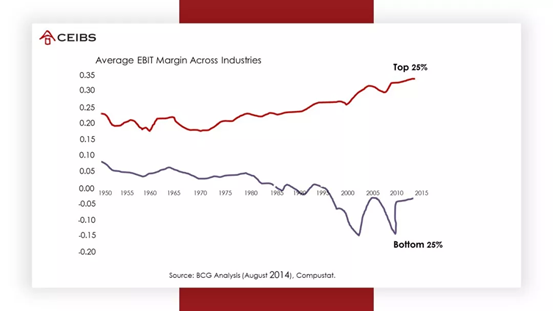The Logic of Success

By Gong Yan
Every year as I lead students from the CEIBS Entrepreneurial Leadership Camp and CEIBS Venture Capital Camp on a visit to Silicon Valley, one of the companies we visit is Google.
Every time I take students to Google, its open canteen and worker-friendly office environment has left them shocked. Almost every time after returning to China, students have tried to incorporate some of Google’s practices in their own companies. They provide afternoon tea, improve their office environment, and in the most extreme cases some have installed their own version of the long slides they saw in Google’s office area.
But after doing this, they all realized that these changes did not have much effect. Why? Causal inversion. Google didn't succeed because of afternoon tea and its staff-friendly office environment; it was only after its success that it had the capital to provide these benefits.
My point is, many people don't have a clear understanding of the underlying logic of success.
We often see that when development is frustrated, we blame it on a bad external environment; but when we are successful, we take the credit. This is the “interested attribution” approach, which emphasizes the subjective role in success and the objective reason in failure.
How can you succeed? Objectively, every era is driven by different forces. Subjectively, it is also important for entrepreneurs to have forward-looking vision. The success of individuals or businesses is inseparable from these two dimensions.
Seize the moment
Every era has its own development momentum. With this kind of power, companies can rise quickly. How can we understand the power of the times? Let's start with the chart below.

This is a set of data, provided by the Boston Consulting Group (BCG), which represents the top 25% (illustrated by the red line) of listed companies in the US by earnings before interest and taxes (EBIT) and the bottom 25%. This is based on an analysis of the average EBIT from 1950 to 2014.
In my opinion, this data shows the business history of the past 70 years, which can be roughly divided into three stages, corresponding to three different developmental dynamics.
First stage (1950s - the end of the 1970s): Made to be king
At this stage, manufacturers have a firm grasp on the value chain, and large manufacturing companies such as Procter & Gamble and General Electric have strong pricing power. The underlying development momentum of this era is the scale effect and continuous expansion.
But at the same time, the scale effect also determines that these companies cannot expand without limit. Because with increasing scale, the cost of communication and coordinated management of enterprises will exceed the benefits of expanding scale. This left a place for other companies to fill.
Therefore, the phrase "excellent companies eat meat, the rest drink soup," is a typical way to describe this period. From the figure we can see that the average of the top 25% of companies is around 20%, and the average of the bottom 25% companies is about 5%.
Second stage (1980s - 1990s): Channel is king
At this stage, discount retailers represented by Wal-Mart have risen strongly. The hypermarket model has become mainstream, and the retail industry has rapidly integrated. Channel vendors have gradually seized pricing power from manufacturers. The driving force behind this era is product placement, and many business stories from this period are about how brands successfully occupied store shelves.
From this period onwards, the gap between the average EBIT of excellent companies and ordinary ones began to widen, and the average EBIT of the bottom 5% of companies was close to zero.
Third stage (mid-1990s to the present): User is king
With the advent of the internet era, the information asymmetry between buyer and seller was erased, and pricing power was irreversibly transferred from seller to buyer. The driving force behind this era is undoubtedly the network effect.
The network effect gradually moved to center stage, resulting in a strong Matthew effect [where the rich get richer and the poor get poorer] between enterprises. The average EBIT of the top 25% of companies in this period exceeded 30%, which is difficult for traditional manufacturing companies to reach, while the bottom 25% of companies had negative numbers.
It can be seen that in the past 70 years, due to the continuous shift in who has the upper hand, some companies have risen while some have left the market. Standing in the center of the stage today, there is no doubt that "users are kings". If enterprises want to make a difference, they must have a clear understanding of this trend and find a way to create value for users.
Four Suggestions for the Future
Entrepreneurial entities need to have vision and foresight.
What will happen in the future? I offer a few of my own inferences for everyone to think about and judge.
- The consumer-to-manufacturer (C2M) model will become mainstream.
In the industrial production stage, standardized products were mainstream, users had less choices about what they bought. As users become more powerful, the future business model will inevitably change, becoming user-oriented, and users will promote production and innovation. Customization and personalization will move from the periphery and become mainstream.
In fact, change is already happening. We can see that in industries closely related to users' food, clothing, housing and transportation; more and more C2M companies are being born, and are slowly moving to the center of the stage.
- Decentralized internet companies will slowly emerge
Today, for many centralized internet companies such as Tencent, Google and Facebook, their underlying logic is to aggregate, clean and package user data, and then commercialize it. However, increasingly powerful users will claim ownership of their data and will no longer allow it to be used by internet companies.
In Silicon Valley, some internet companies have begun to decentralize; I believe this will slowly become mainstream within the industry.
- "User first" will become a consensus
Historically in business, there is a topic on which we cannot achieve overall consensus: who is most important among employees, users and shareholders?
General Electric legend Jack Welch once said that companies should focus on maximizing shareholder value, and this has become the creed of many companies. But with the outbreak of the 2008 financial crisis, this approach has been widely questioned.
If shareholders’ interests are not the most important, then are the interests of both employees and users the most important? We have seen that more and more entrepreneurs have put forward the concept of “user first, employee second”. As users become more powerful, it is believed that "user first" will become a consensus.
- The fission effect will become the driving force of the new era
We have seen that in the past 70 years, there has been a power shift. The ‘power of the times’ has changed from a scale effect to a network effect. In the future, what will become the driving force of the new era? I think it will be a fission effect.
What is the fission effect? Simply put, users are no longer just users, they also play the role of company employees and shareholders. Meaning users become fissile nodes that will deliver tremendous commercial value. We see this signal in some of the newer species that are familiar to everyone, such as Pinduoduo and Luckin Coffee.
The power of the times is changing. Whether it is an individual or a business, how we respond to this trend determines our success or failure in the next era. We must redefine the boundaries of technology, redefine the value network, and redefine the rules of the game within organizations and industries. Only by redefining can new opportunities be created.
Finally, I would like to share with you a sentence I like very much: there is never one perfect method in this world. To be free, you have to sacrifice security. If you want to move forward, you have to leave where you are now.
Gong Yan is Professor of Entrepreneurial Management Practice at CEIBS, and Program Director for both CEIBS Entrepreneurial Leadership Camp and CEIBS Venture Capital Camp. This article is based on edited excerpts of a speech given during the opening ceremony of the 2018 CEIBS EMBA Fall Class.













